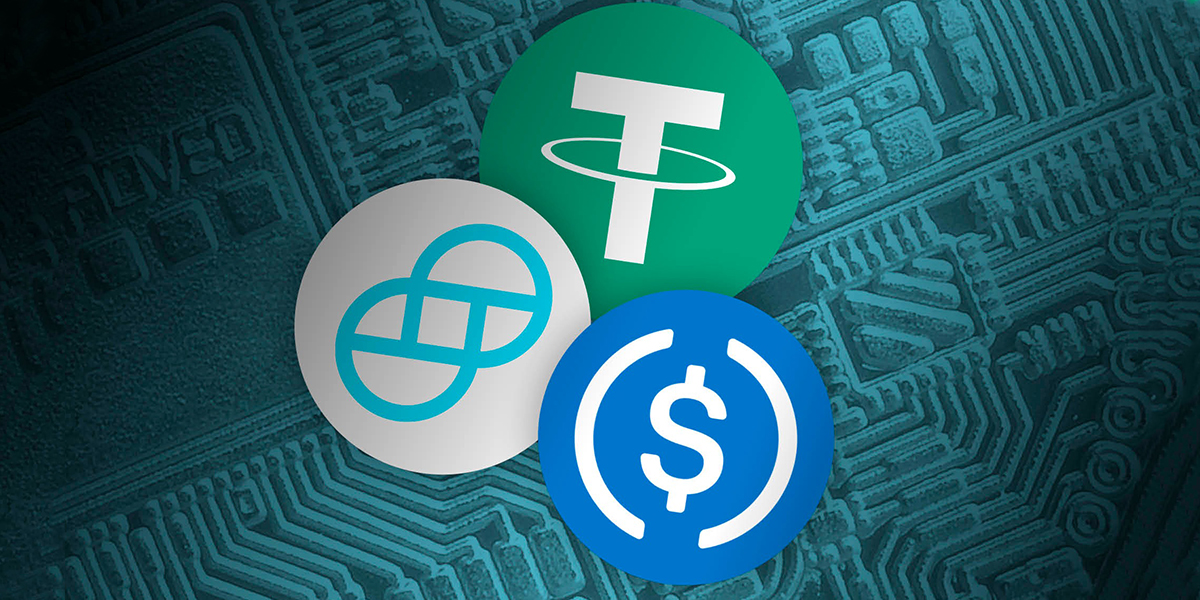I say cryptocurrencies, and you hear volatility; the crypto market is a wild game with extreme price swings. However, there is one asset that stands out, Stablecoin. The name says it all, but let’s dig more. Stablecoin is meant to stay stable, their price has to remain roughly the same from the day you buy one and the day you spend or trade one.
How is it possible, you say?
Stablecoins are benchmarked to a fiat currency like the US dollar or a commodity, say gold. Most stablecoins are currently pinned to the dollar.
So why bother buying if it is going to stay the same? Not for profits.
It is used as a means to store money in the crypto network and to use when trading crypto assets. Stablecoins are used for financial exchanges, too, like lending and borrowing or making an overseas transaction swiftly and seamlessly.
“Stablecoins are a medium of exchange,” said Stephen McKeon, the associate professor of finance at the University of Oregon. He is also a partner at an investment fund that focuses on cryptocurrency; most of his transactions use stablecoin.
Stablecoin stock
Stablecoins have snowballed in the past year. According to The Block, crypto research and analysis provider, the combined supply of stablecoins from the ten giant issuers was $127.8 billion as of October 20. The numbers went up from last year’s $21.6 billion. The biggest issuer is a tether, and it went up to $72.6 billion from $16.3 billion, a jump to 345% in the same period. Next comes Circle, the second-largest issuer whose supply grew more than 1,000%, from $2.8 billion to $32.4 billion.
The aim of stablecoin
Created in 2014, stablecoin aimed to smoothen transactions in the cryptosystem since banks were hesitant about giving accounts to crypto companies then, said McKeon.
Banks were cautious about associating with the firms due to the anonymity of crypto traders and the threat of terrorist financing, money laundering, and tax evasions. According to McKeon, there was a real need for bitcoin miners and their exchanges to be able to use US dollars without the banking system.
Illegal activities are still a concern, but the cryptoverse has enlarged, so much so that the banking industry and US regulations have to pay heed. And, with soaring numbers of stablecoins, the trust of traders in the coin has soared as well. As a result, banking giants and regulators are now starting to engage, and central banks are looking at launching their own digital currencies too.
McKeon says that this transformation is similar to the initial indisposition of the legal profession to accept e-signatures as legally binding.
Stablecoin regulation and protection
Stablecoin does not have a federal legal framework for regulating it. So far, regulators and states have called alleged violations by stablecoin providers based on existing rules.
Let’s take tether, for example; tether did not entirely back its stablecoin with US dollars for almost four years, according to Commodity Futures Trading Commission. Simply put, tether did not have enough US dollars with them to pay investors who could potentially cash out their Tether stablecoins.
The CFTC stated that tether failed to reveal that it had unsecured receivables and non-fiat assets in its reserves and misrepresented that it would undergo necessary, professional audits to prove that it maintained ‘100% reserves at all times even though that was not the case.
Why not holding enough reserves to back its stablecoins is a problem? The company won’t be able to pay if a large number of investors decide to cash out.
Tether was then ordered to pay around $40 million as a penalty to settle the CFTC charges and another case alleging false representation by the state of New York.
Tether did not comment on the CFTC charges but on the New York case, it said, “contrary to online speculation, there was no finding saying that Tether issued tether tokens with no backing in two and half years.”
Federal regulators are trying to draft new rules for stablecoin now and clearly define what stablecoin is, what it stands for, and if it needs to be regulated as a security.
“Some propose applying ETF regulatory frameworks to some stablecoins: other wants more disclosure of research asset breakdowns to unveil the potentially illegal activities,” noted the Congressional Research Service in a report.
Potential risks
Numerous prospective investors are hesitant to put money into crypto due to the lack of regulations and its confusing nature, said Erika Rasure, an assistant professor of business and finance services at Maryville University in Missouri.
Stablecoin is comparatively safer than other cryptocurrencies to get your money after putting it in. Rasure referred to stablecoin as a gateway drug. According to her, stablecoin value is fast, low-cost means to trade and move assets overseas, which is very helpful to people who leave their country to work abroad and want to send money to their folks.
Furthermore, Rasure thinks that if stablecoin is more widely adopted as a mode of exchange at any given time, it can benefit consumers and retailers alike as it provides choice, efficiency and has lower fees compared to today’s traditional banking and credit card systems.
And, since there are so many issuers of stablecoins, with each having its policies and offering different degrees of transparency, you must do your own research before stashing any of them.
“Issuers should have the cash assets with them to keep their promise. Again, it is a matter of transparency,” Rasure said.


